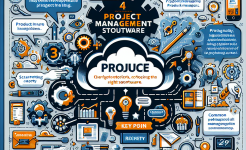Demand management in the Integrated Product Development (IPD) flowchart is a crucial process that sets the stage for the successful development and launch of products. At its core, it involves identifying, analyzing, and prioritizing the needs and wants of customers, as well as aligning them with the company's strategic goals. This foundation is essential because it ensures that resources are allocated effectively and that the product development efforts are focused on creating value for the end-users.
To begin with, understanding the market and customer needs is the first step in building a solid demand management foundation. This requires in-depth market research, including surveys, interviews, and analysis of market trends. By gathering this information, companies can gain insights into what customers are looking for in a product, what pain points they are experiencing, and how the product can be designed to meet or exceed their expectations. Without this understanding, product development may be based on assumptions rather than actual customer needs, leading to products that fail to gain traction in the market.
Moreover, aligning customer needs with the company's strategic goals is equally important. A company's strategic goals may include factors such as market share growth, profitability, and innovation. Demand management should ensure that the product ideas generated are in line with these goals. For example, if a company aims to be a leader in innovation, the demand management process should prioritize ideas that have the potential to introduce new and unique features to the market. This alignment helps in making informed decisions about which product opportunities to pursue and which to搁置.
Capturing Demand Effectively
Capturing demand is the process of gathering all the relevant information about customer needs, market trends, and competitive landscape. It is a continuous activity that should be integrated throughout the product development lifecycle. Effective demand capture ensures that no important customer requirements are overlooked and that the product development team has a comprehensive understanding of what the market demands.
One aspect of capturing demand is through direct customer interactions. This can involve conducting face-to-face interviews with customers, organizing focus groups, or even engaging in user testing sessions. These interactions provide valuable insights into the customers' experiences, preferences, and pain points. For instance, in a focus group for a new smartphone, customers may share their frustrations with the current battery life or the lack of certain camera features. This feedback can be used to shape the requirements for the new product.
In addition to direct customer interactions, monitoring market trends is also a vital part of demand capture. This includes keeping an eye on industry reports, technological advancements, and competitor activities. For example, if a competitor is launching a product with a new and innovative feature, it may be an indication that the market is ready for such a feature. By staying informed about these trends, companies can identify emerging opportunities and threats, and adjust their product development plans accordingly.
Furthermore, internal sources within the company can also contribute to demand capture. Sales teams, for example, are in direct contact with customers on a regular basis and can provide valuable feedback on customer requests and market demands. Customer service teams can also share insights based on the issues and suggestions raised by customers during the post-purchase support phase. By leveraging these internal sources, companies can gather a more comprehensive view of the demand.
Analyzing and Prioritizing Demand
Once the demand has been captured, the next crucial step is to analyze and prioritize it. This process helps in determining which requirements are most important and should be addressed first in the product development process. Analyzing demand involves evaluating the feasibility, impact, and urgency of each requirement.
Feasibility analysis assesses whether a particular requirement can be implemented within the given constraints of time, resources, and technology. For example, a customer may request a feature that requires a level of technology that is not yet available or would take a long time to develop. By conducting a feasibility analysis, the product development team can determine if it is possible to meet this requirement or if alternative solutions need to be explored. This helps in avoiding unrealistic expectations and ensures that the product development process remains on track.
Impact analysis, on the other hand, focuses on understanding the potential impact of a requirement on the product, the market, and the company. A requirement that has a high impact on customer satisfaction and market competitiveness may be given higher priority. For instance, a new security feature in a software product may have a significant impact on customer trust and could differentiate the product from competitors. By evaluating the impact, the team can prioritize requirements that will have the greatest positive influence on the product's success.

Urgency is another important factor in prioritizing demand. Some requirements may be time-sensitive, such as those related to regulatory compliance or responding to a competitor's move. These urgent requirements need to be addressed promptly to avoid negative consequences. By considering the urgency, feasibility, and impact of each requirement, the product development team can create a prioritized list of demands that will guide the product development process.
Translating Demand into Product Requirements
After analyzing and prioritizing the demand, the next step is to translate it into clear and actionable product requirements. This involves taking the customer needs and market demands and converting them into specific, measurable, and achievable features and functions of the product.
The first step in translating demand into product requirements is to break down the high-level customer needs into more detailed and specific elements. For example, if the customer needs a "user-friendly" product, this broad requirement needs to be translated into specific design elements such as an intuitive interface, easy navigation, and clear instructions. By doing this, the product development team has a more precise understanding of what needs to be built.
Once the detailed elements are identified, they need to be defined in a way that is measurable. This means setting clear criteria for each requirement. For example, instead of just stating that the product should have "fast performance," a measurable requirement could be that the product should load within 3 seconds. Measurable requirements help in testing and validating the product during the development process to ensure that it meets the desired standards.
Finally, the product requirements need to be communicated effectively to all stakeholders involved in the product development process. This includes the engineering team, design team, and quality assurance team. Clear communication ensures that everyone understands what needs to be built and what the expected outcomes are. By translating demand into well-defined product requirements, the product development process can proceed smoothly with a common understanding among all team members.
Managing and Controlling Demand throughout the Process
Demand management is not a one-time activity but a continuous process that needs to be managed and controlled throughout the product development lifecycle. This ensures that the product remains aligned with the market needs and the company's strategic goals.
One aspect of managing and controlling demand is to monitor changes in the market and customer needs. The market is dynamic, and customer preferences can change over time. For example, new technologies may emerge, or competitors may introduce new products that shift the market landscape. By continuously monitoring these changes, the company can adjust the product requirements accordingly. This may involve adding new features, modifying existing ones, or even canceling certain features that are no longer relevant.
Another important aspect is to manage the scope of the product. As new demands are identified or existing ones are modified, there is a risk of scope creep, which can lead to delays, cost overruns, and a decrease in product quality. To prevent this, a strict change management process should be in place. This process should include evaluating the impact of any changes on the project schedule, budget, and resources, and obtaining proper approvals before implementing the changes.
Finally, maintaining communication and collaboration among all stakeholders is crucial for effective demand management. The product development team, marketing team, sales team, and customers should all be involved in the process. Regular meetings and updates can help in sharing information, addressing concerns, and ensuring that everyone is on the same page. By managing and controlling demand throughout the process, companies can increase the chances of delivering a product that meets the market needs and achieves the desired business goals.
In conclusion, demand management in the IPD flowchart is a multi-step process that is essential for the success of product development. Starting with understanding the foundation, capturing demand effectively, analyzing and prioritizing it, translating it into product requirements, and managing and controlling it throughout the process, each step plays a crucial role. By following these five core steps, companies can ensure that their product development efforts are focused on creating products that meet the needs of the customers, are competitive in the market, and align with the company's strategic goals. This comprehensive approach to demand management helps in optimizing resources, reducing risks, and increasing the likelihood of delivering successful products in a timely and cost-effective manner. It is a continuous process that requires constant attention and adaptation to the changing market dynamics, but when implemented correctly, it can be a key differentiator in the highly competitive business environment.
ARTICLE TITLE :5 core steps of demand management in IPD flowchart ,AUTHOR :ITpmlib

















